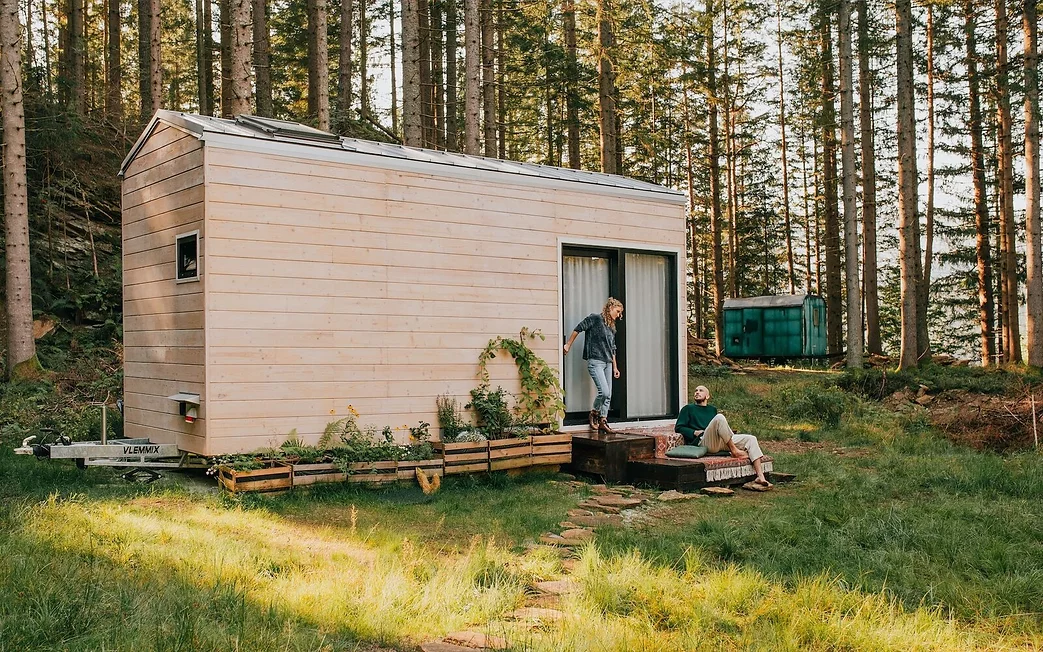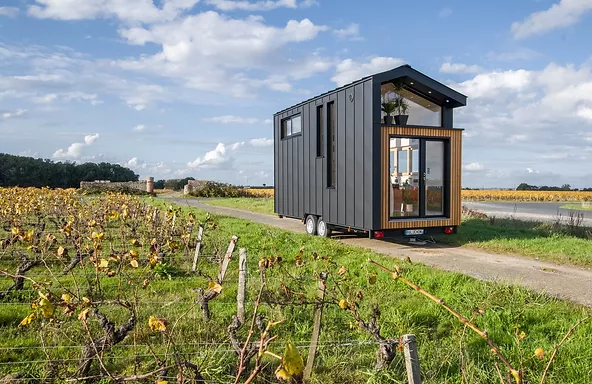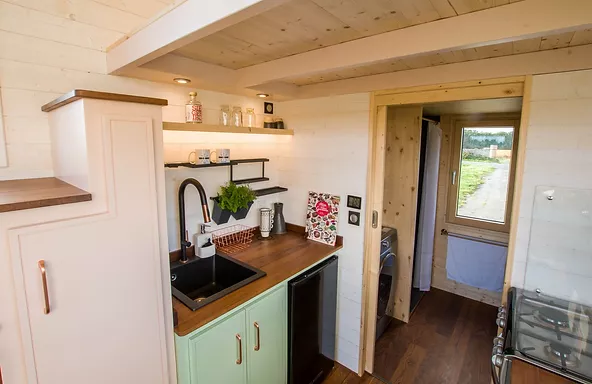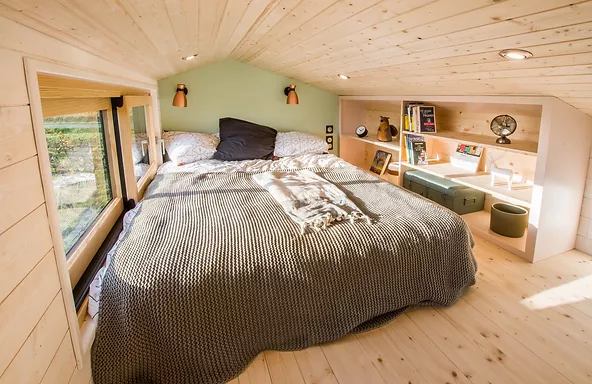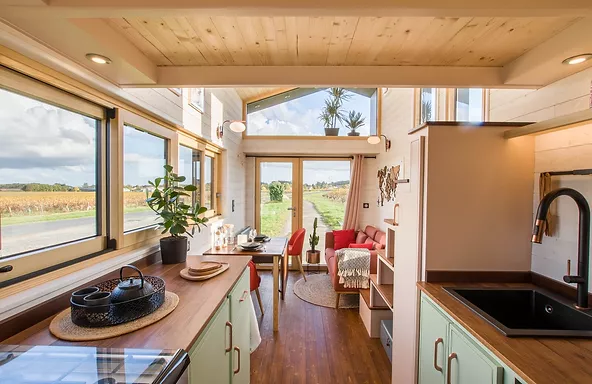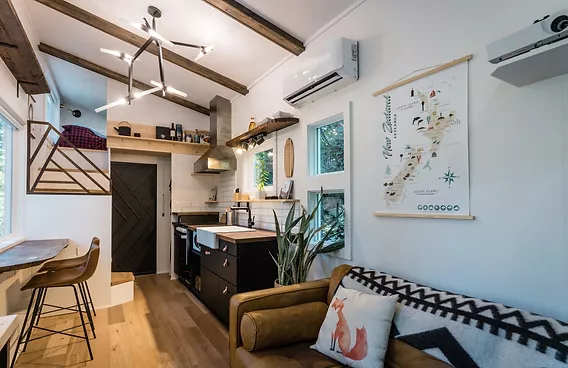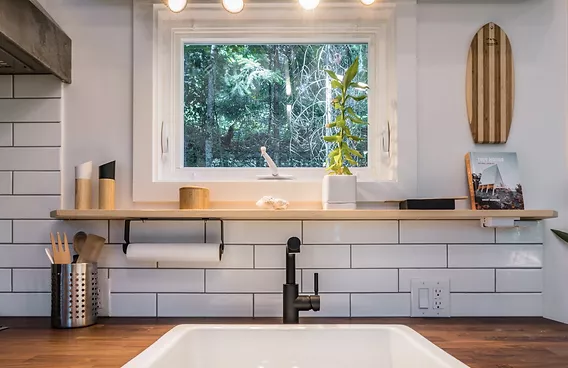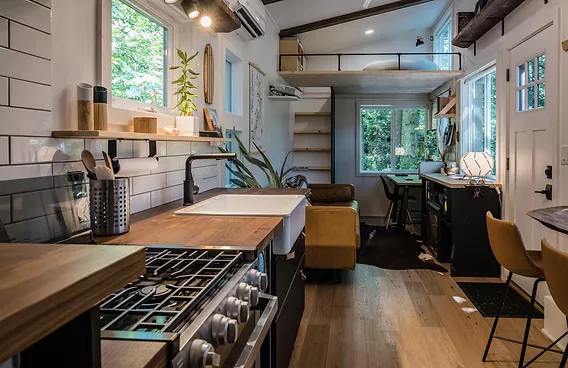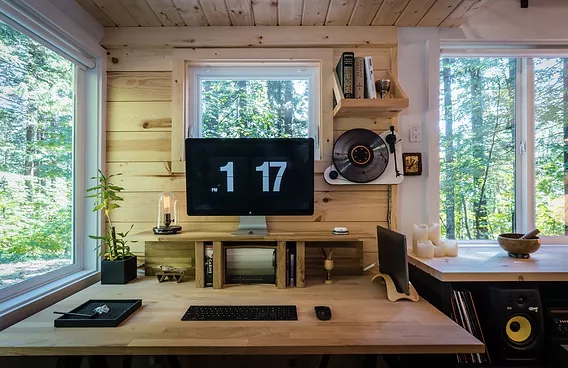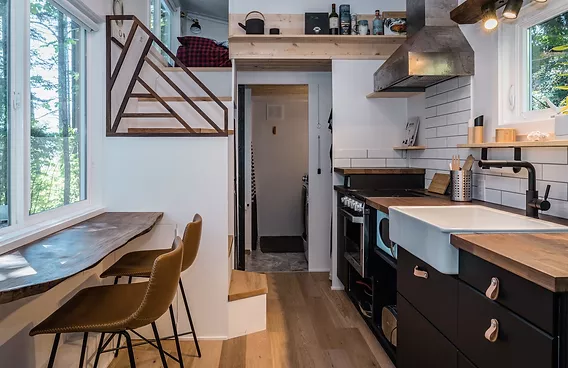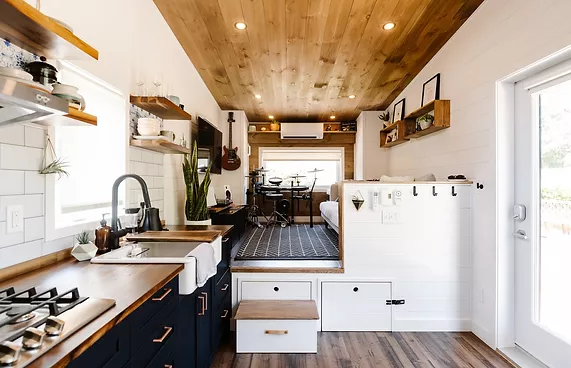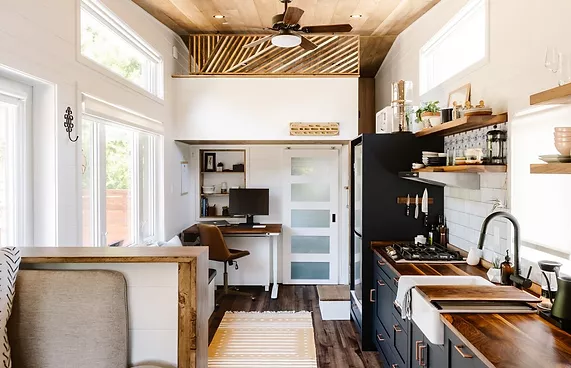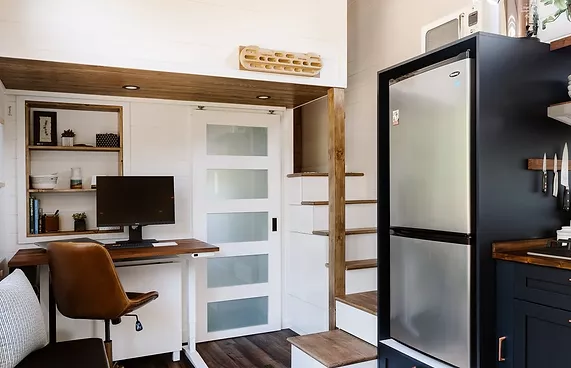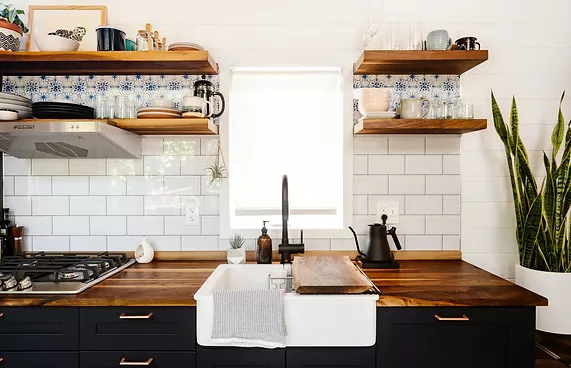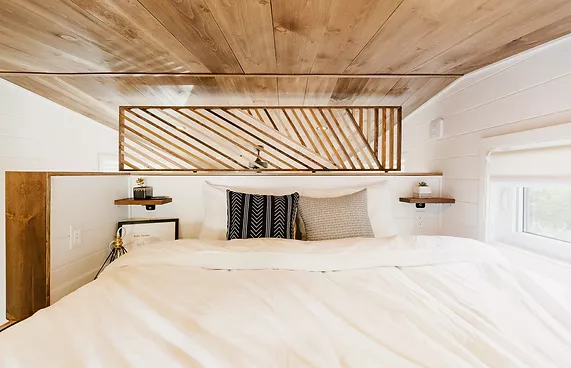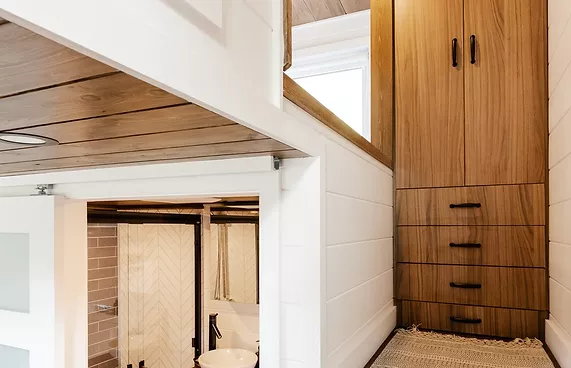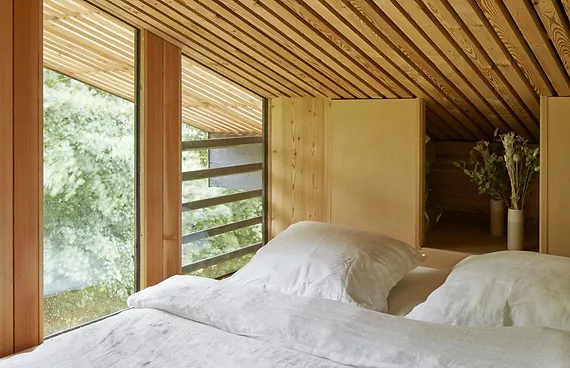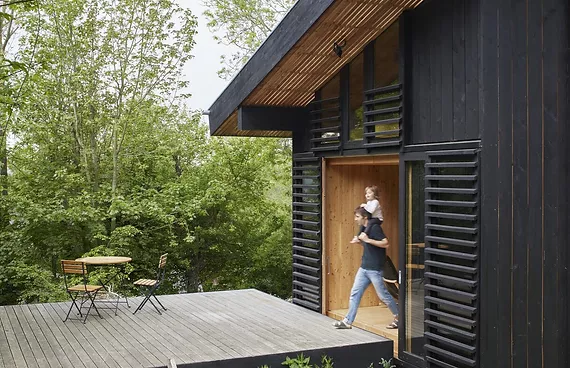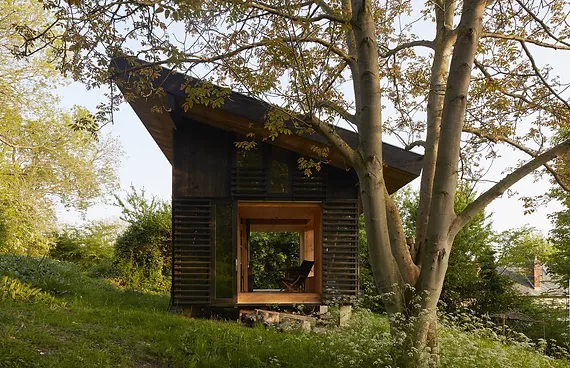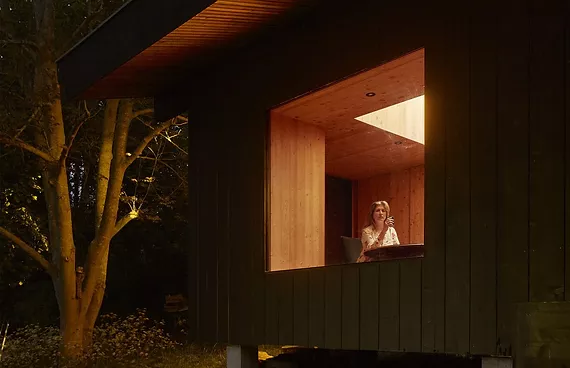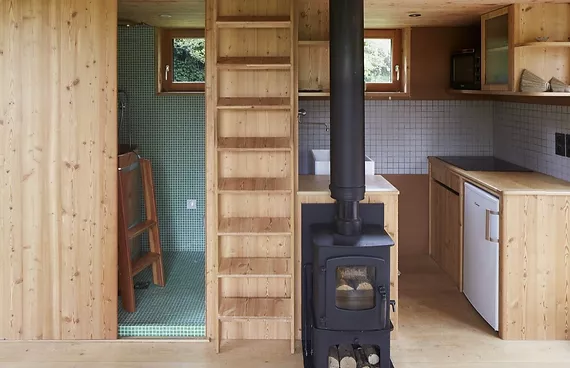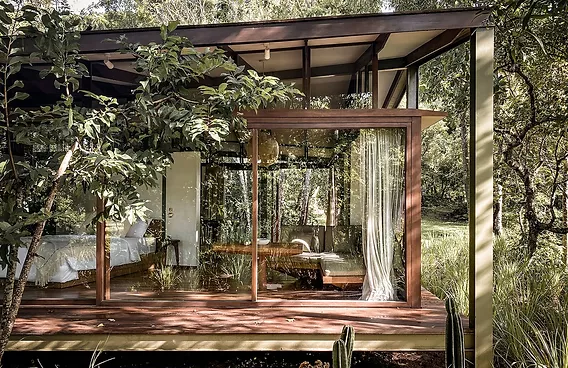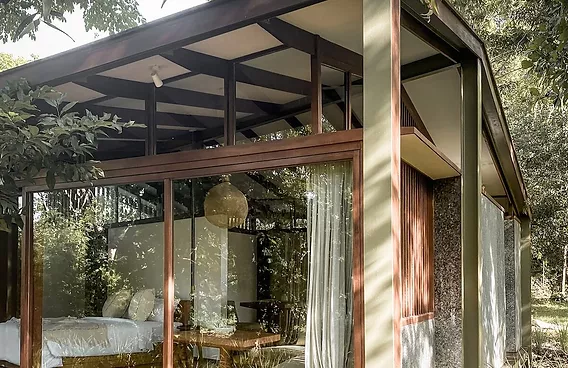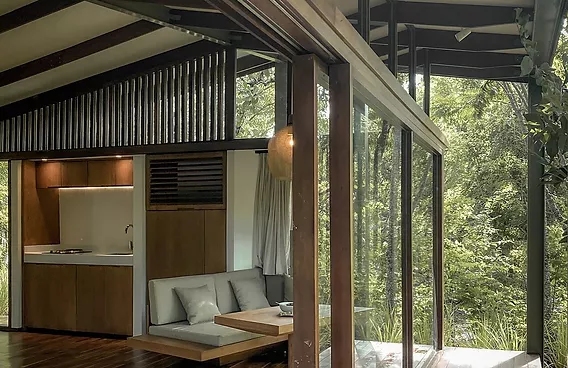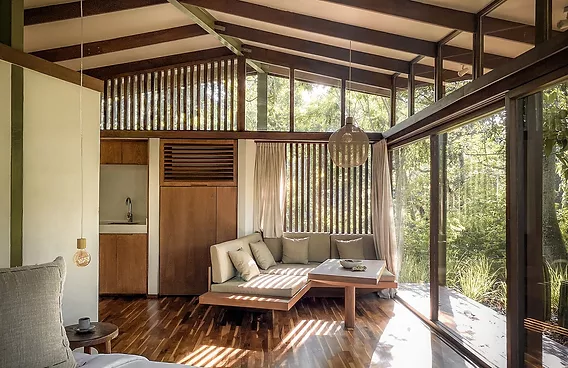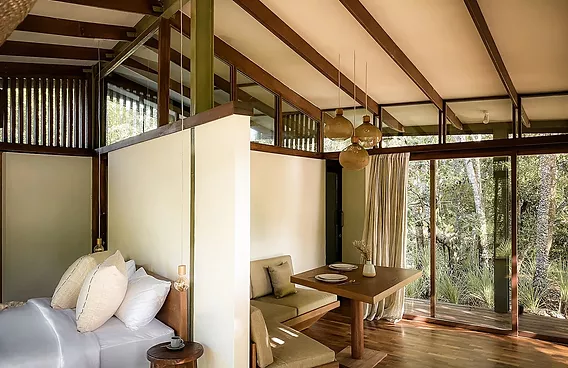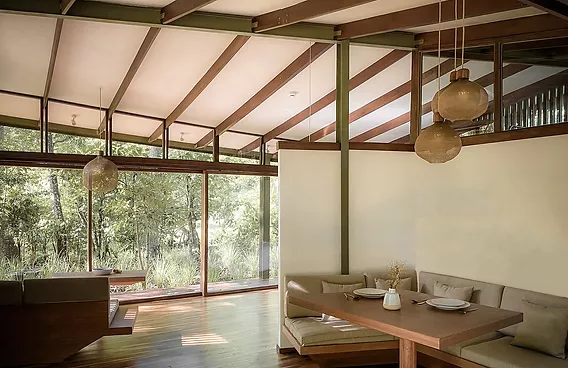What To Expect
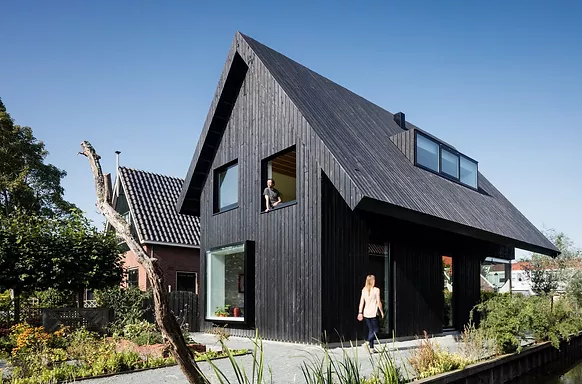
Image via Dwell
What is a Tiny Home?
Image via Dwell
Tiny homes are generally thought of as a small house, typically under 600 square feet.
Tiny houses usually range between around 60 and 400 square feet. You could possibly extend this range up to around 1000 square feet, but doing so would lead you into the territory of small houses. As a general rule of thumb, many tiny houses are around the 200 square foot mark (The Tiny House).
How Much Does a Tiny Home Cost?
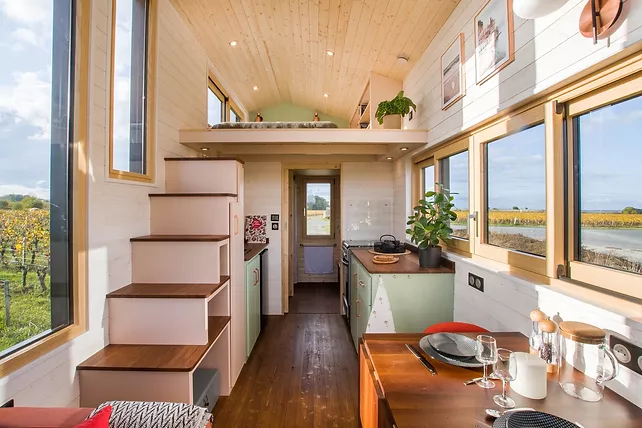
Image via Dwell
The average cost of a tiny house is $30,000 – $60,000, but a tiny house can cost as little as $8,000 or up to $150,000 (Rocket Homes)
1. It's typically cheaper to build a tiny house than to buy one:
-
DIY-built tiny house: $35,000 to $45,000.
-
Tiny house built by a reputable builder: $50,000 to $70,000.
-
Custom-built tiny house: $80,000 to $100,000 (Pad Tiny House).
2. The cost of building a regular-sized house is around $290,000.
3. According to Business Insider, zoning laws for tiny houses can be strict and some require you to own the land where your tiny house is parked
4. Tiny homes typically do not appreciate, but they can be a great housing option depending on your lifestyle
Quick Facts:
Benefits of Tiny Homes
Less space+ less energy= savings
Tiny homes can be kept tidy easier
Tiny homes allow you to keep only the essentials
Less stuff allows you to focus on what's important
Tiny homes use less energy and create less waste
Many tiny home owners do not need mortgages, saving them thousands of dollars in interest
Tiny homes can be moved if they are not cemented, which means you are not limited to one area
With smaller square footage area, renovations and upgrades are cheaper
Tiny homes promote connection to a simpler lifestyle, with less focus on materials
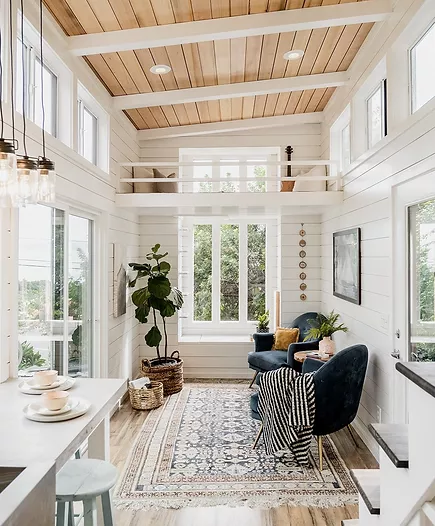
Image via Teeny Abode
Did You Know?
Tiny houses are not mobile homes
Tiny houses are built to resemble a natural home a quality that is not installed in mobile homes. They are properly insulated and are generally far better than the traditional homes. As a result, they facilitate more savings on energy that could be used in heating and cooling.
What Else Should I Consider?
Image via Node
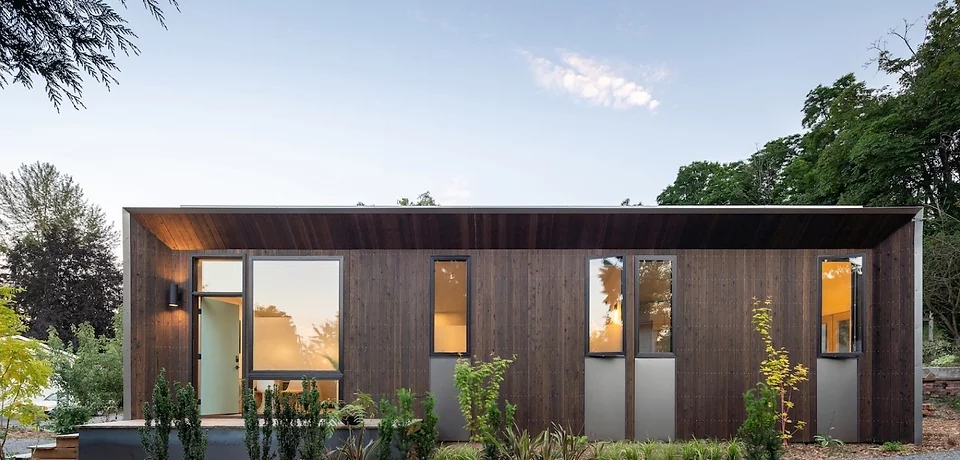
Although you will have a lower carbon footprint and save money living in a tiny home, it's important to consider if a tiny home will fit your lifestyle.
Entertainment
Are dinner parties or having guests over a priority? How can your tiny home allow you to continue these?
Lifestyle
Is your job flexible with moving? Would you require being close to a grocery store or market?
Pets
How can your home be designed to accommodate your four-legged friend?
Zoning Laws
What are the zoning laws of the area? Are tiny homes allowed in the area?
This article shares some more points
Tiny Home Checklist
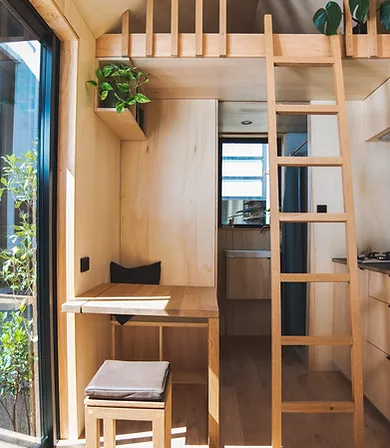
Image via Dwell
1. Consider your lifestyle and priorities and determine whether tiny living is a good fit. How do you want your home to look like?
2. Decide if you will build or buy your tiny home and explore land options (do you need to buy or rent land?)
3. Explore financing options. Making a budget for expected monthly costs (utilities, land costs, storage unit if necessary)
4. Compare building options if you will build (link in FAQ), or explore building plans for your home
5. Have fun designing and personalizing your tiny home!
Find Container Homes
Built in 2019, this tiny house was up for sale in the Pacific Northwest near Portland, Oregon. The home is 31-feet-long, 8.5-feet-wide and features a contrasting facade of natural cedar and painted board-and-batten siding.
The home is available unfurnished for $89,000. It's 330-square-foot size is an artful example of “Japandi” style.
Read more here.
Ryan Tuttle, a Northern California–based freelance photographer designed her own 331-square-foot home as a way to manage the high cost of living in the Bay Area.
She commissioned Minimaliste, a Quebec-based tiny home company, to construct her own design. Read more here.
This 215 square-foot cabin is situated about a half mile from the sea and the limestone cliffs of Normandy, France.
Substantial openings on each of the four elevations create a cross breeze that flows through the interior. The windows are layered with wood slats that help mitigate sunlight and provide an added layer of insulation; they also allow for privacy or openness, depending on the weather and the clients’ mood. Read more here.
At 688 square feet, this Tetra Pod tiny home is larger than average, and is every bit as artful as it is efficient. Stilt Studios is offering DIY plans for just $5,000. Read more here.
FAQ's
How do I know if a tiny home is right for me?
It is important to consider your lifestyle and priorities when deciding whether a tiny home is a good fit for you. With a tiny home, it is difficult to keep items of sentimental value since your space will be limited. It is worth considering alternatives (i.e. unit storage) if you are interested in keeping certain items. Creativity and flexibility are important if you decide to make the switch to tiny living.
Can I finance a tiny home?
Most people don’t borrow money to build their tiny homes. The more common path is to first downsize expenses and possessions, save money, secure a place to build the house, and then start the build. It’s a slower path into a tiny home than taking out a loan, but seems to be most common. (Tiny House Design).
Is it better to build or buy a tiny home?
Those capable and willing to build their own tiny house will save thousands on labor costs and will be more involved in the design of their tiny house. However, being your own contractor will mean having to source all materials yourself. And unless you have family and friends willing to pitch in, you may end up having to outsource part of the labor. A tiny house kit may be a good option if you are not sure whether you want to build your home from scratch. These kits often provide homebuyers with blueprints, instructions, and materials for constructing their own tiny house. For more information on tiny house builders that offer ready-to-go tiny house kits, check out The Spruce’s list here. The most stress-free approach to building a tiny house is to simply have professionals build it for you. You’ll need to find a local contractor who either specializes or has experience in building tiny houses. To find a tiny house builder in your area, check Tiny House Listings. Many tiny house owners will tell you it’s worth the higher price than building your own home. Working with a contractor who is knowledgeable of the tiny house market should also ease the process of obtaining the right permits and meeting certain codes (source: Moving)
Can I build my tiny home anywhere?
Tiny houses are still in a grey area, and zoning and ordinances don’t really account for this type of alternative housing – but this is changing. Some communities are adapting as the popularity of tiny homes increases. To find out if your community allows tiny homes check with your local planning department. Depending on what kind of tiny home you want, your community might consider that an RV, or an ADU (accessory dwelling unit). Every community has different codes, zoning, and ordinance so it's worth doing some research.
Can I buy plans for a tiny home?
Yes, builders sell plans if you decide to build your tiny home. The following are some links for buyers who sell plans:
-
Tiny House Design
-
Tiny Home Builders
-
Sonoma Shanty
-
Four Lights Tiny Homes
-
iStockHousePlans
-
FreeGreen.com
-
Yes Wee Cabins
-
Tiny Green Cabins
-
Tumbleweed Tiny House Company

